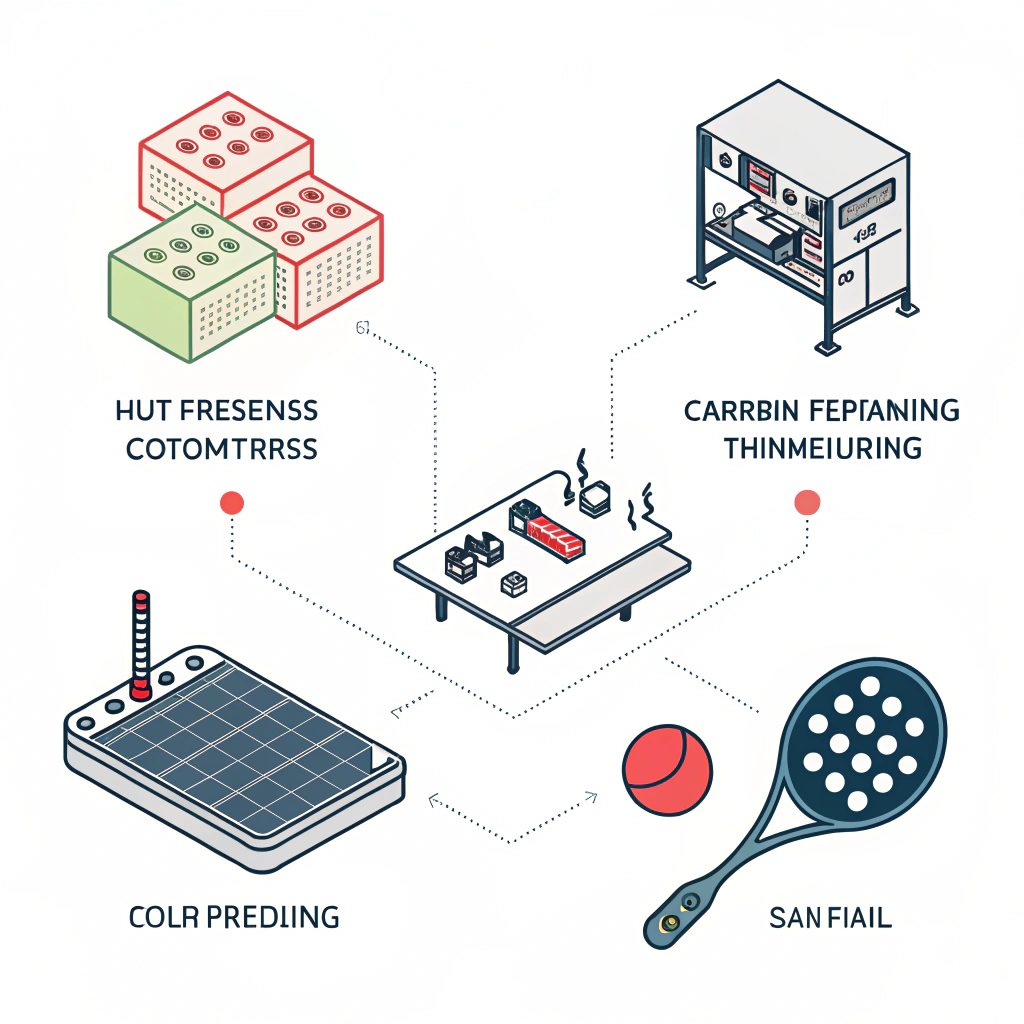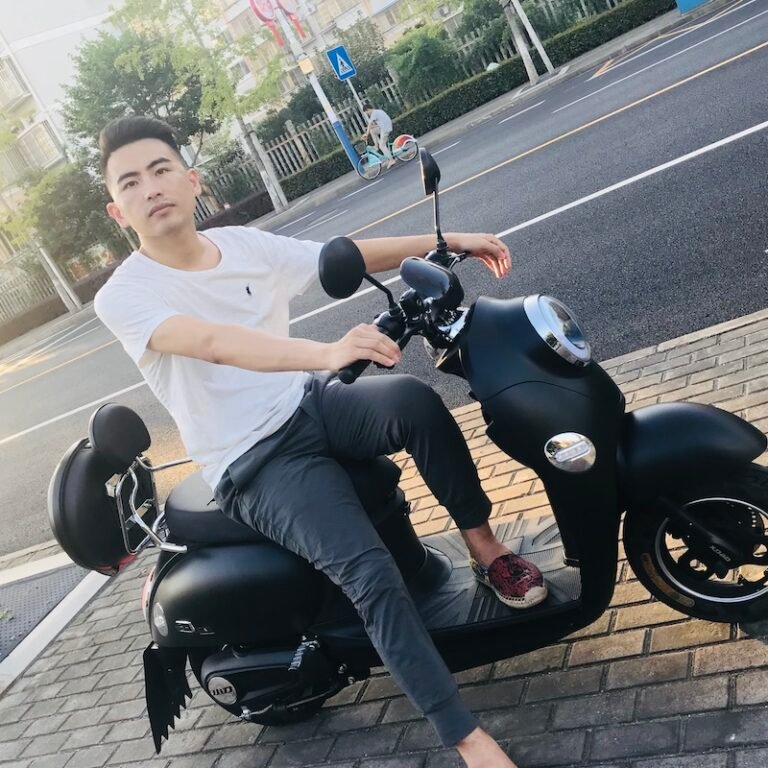NEX Pickleball custom pickleball paddles combine advanced production techniques, premium materials, and robust quality control to offer a manufacturing solution that meets the rigorous demands of competitive and recreational play. In this article, we detail the challenges B2B buyers face in sourcing reliable custom pickleball paddle manufacturers and present solutions such as Hot Pressing1, Cold Pressing2, and Thermoforming3 processes. Our discussion includes material benefits, process comparisons, and actionable steps for establishing a successful OEM partnership4.
For procurement managers and sports club executives, choosing the right manufacturing partner for custom pickleball paddles can be challenging. The modern market demands paddles that deliver both superior performance and customization. Companies must balance production efficiency, material quality, and innovative design to serve both serious players and recreational enthusiasts.
Many sports equipment suppliers risk compromising on quality when trying to accommodate diverse customization requests with generic products. The real challenge lies in achieving consistent high quality while offering personalized options. High-performance paddle designs usually require advanced manufacturing techniques combined with premium input materials. These factors influence durability, impact resistance, balance, and overall player satisfaction.
Several key challenges create complexity in the custom paddle manufacturing process:
-
Material Variability:
Using advanced materials such as Carbon Fiber5 (3K, 12K, T300) and Fiberglass can provide remarkable performance but requires rigor in quality control and process precision. Poor matching of materials may lead to durability or performance issues. -
Production Process Complications:
Choosing between hot pressing, cold pressing, or thermoforming is not merely a technical decision—it directly impacts product quality, turnaround times, and final cost. Each process has unique benefits and limitations. -
Customization Versus Mass Production:
Allowing OEM customers to customize paddle designs adds additional layers of complexity. Custom features should not interfere with the paddle’s essential attributes such as weight distribution and ergonomic comfort. -
Quality Control:
Meeting the strict standards expected from performance sporting equipment necessitates stringent quality control measures. Every paddle must undergo extensive testing to ensure it meets high benchmarks for shock absorption, balance, and durability.
Addressing these challenges involves a deep understanding of the manufacturing processes available and how each can be best applied. Below we explain three primary production processes and provide a comparative insight:
Hot pressing involves heating paddle materials and applying high pressure to fuse components together.
-
Advantages:
- High production efficiency suitable for large-scale production.
- Creates strong paddles with excellent impact resistance.
- Maintains structural integrity, ensuring paddles can withstand intense play.
-
Disadvantages:
- Material properties may be altered by high temperatures.
- Requires significant equipment investment.
Cold pressing shapes the paddle material at room temperature under mechanical pressure.
-
Advantages:
- Ensures precision in paddle thickness and structure.
- Preserves the natural properties of materials, promoting better control and flexibility.
- Provides superior ball feel and responsiveness.
-
Disadvantages:
- Longer production cycles compared to hot pressing.
- Necessitates advanced pressure control equipment.
Thermoforming heats materials to a pliable stage before molding them into shape using precision molds.
-
Advantages:
- Ideal for creating paddles with intricate, precise designs.
- Distributes materials uniformly to maintain paddle stability.
- Suitable for premium, custom products with complex requirements.
-
Disadvantages:
- Longer production times and higher upfront equipment costs.
Below is a comparative table summarizing each process:
| Production Process | Advantages | Disadvantages |
|---|---|---|
| Hot Pressing | High efficiency; excellent impact resistance; strong build | May alter material properties; high equipment cost |
| Cold Pressing | Precision in thickness; preserves material quality; enhanced control | Slower cycle time; requires precise pressure control |
| Thermoforming | Allows intricate designs; uniform material distribution; ideal for custom paddles | Longer production time; best suited for premium products |
The performance of a custom pickleball paddle is largely determined by the materials used and the quality of the manufacturing process. NEX Pickleball utilizes a range of premium materials that cater to both power and finesse.
-
3K Carbon Fiber:
Renowned for its strength and flexibility, this material provides a high rebound force, excellent durability, and reduced vibration during play. -
12K Carbon Fiber:
Offers a denser weave for a smoother surface, enhanced hardness, and improved impact resistance, making it perfect for high-level competitive play. -
T300 Carbon Fiber:
Balances strength with light-weight characteristics. It delivers excellent tensile strength and is ideal for producing paddles that combine speed with control.
-
Fiberglass Paddles:
Incorporate materials like E-Glass Fiberglass that offer a broader sweet spot and improved ball control, catering to players who value precision. -
Composite Materials:
Our composite options blend carbon fiber and fiberglass to achieve a balance of power, control, and weight. Additionally, bamboo core composites provide impact resistance along with clear hitting feedback, while honeycomb cores ensure superior shock absorption.
The core of the paddle is vital in determining its overall performance:
-
Nomex Honeycomb Cores:
Known for durability and excellent shock absorption, these cores are preferred in high-performance settings. -
Aluminum Honeycomb Cores:
Offer a balanced design with integrated control and power. -
Polymer Honeycomb Cores:
Provide excellent elasticity and are favored by recreational players for reduced vibration.
By offering these diverse material options, NEX Pickleball ensures procurement managers can select paddles that align with their specific performance and customization requirements.
Quality control is at the heart of every production process at NEX Pickleball. Our rigorous testing protocols ensure that each paddle not only meets but exceeds industry standards. Key elements include:
-
Consistent Weight Distribution:
Every paddle is designed to ensure optimal balance, contributing to improved player performance. -
Ergonomic Grip Design:
A variety of grip sizes are available to accommodate all player types, ensuring comfort and performance during extended play. -
Surface Treatment:
Special treatments on paddle surfaces enhance ball grip, leading to better spin and control. -
Customization Options:
Businesses have the option to tailor paddle designs. Customization features include adjustments to paddle weight, balance, grip size, and design aesthetics. This flexibility is particularly attractive to sports equipment retailers looking for OEM capabilities, ensuring their branded products meet customers’ expectations for both performance and durability. -
OEM Partnerships:
By collaborating directly with B2B buyers, NEX Pickleball offers draw-down production capabilities that allow for on-demand printing and design modifications, ensuring timely delivery and competitive pricing.
Our commitment to quality is supported by advanced production processes and materials, ensuring that each paddle can deliver a performance edge from the first play to competitive scenarios. Detailed in-house testing and quality assurance measures ensure that the final product plays true to its design goals, offering excellent impact resistance, controlled ball feel, and durability under high-stress conditions.
Adopting advanced production techniques is paramount for balancing customization with production efficiency. Let’s look at a few data points and case studies that highlight the benefits of each technique:
-
Production Throughput:
Hot pressing allows for rapid production schedules and high-volume capacity, making it ideal for large OEM contracts, whereas cold pressing shines in customization contexts that demand fine control without compromising on the material’s natural performance characteristics. -
Cost-Benefit Analysis:
While initial equipment investment in thermoforming is higher, the technique provides premium products with complex designs that cater to niche markets. This has been reflected in case studies where clients witnessed improved market reception and higher customer satisfaction ratings when using thermofomed paddles. -
Customer Feedback:
Our OEM partnerships frequently cite the high consistency and performance of NEX Pickleball products as key factors in reordering and long-term contract renewals. Businesses have seen an increased competitive edge when offering paddles with enhanced quality control procedures.
A sample cost-benefit table can be beneficial in visualizing these comparisons:
| Factor | Hot Pressing | Cold Pressing | Thermoforming |
|---|---|---|---|
| Production Volume | High | Moderate | Low to Moderate |
| Customization Flexibility | Moderate | High | Very High |
| Equipment Investment | High | Moderate | Very High |
| Production Cycle Time | Fast | Slower | Slow |
| Suitable For | Mass production, durable builds | Precision and customized designs | Premium, complex designs |
Procurement managers and sports equipment retailers should consider the following steps when selecting a manufacturing partner:
-
Assess Material Requirements:
Identify the performance needs of your target customer. Choose from our diverse range of materials like Carbon Fiber variants, Fiberglass, or tailored composites that meet specific play characteristics. -
Evaluate Production Processes:
Ascertain whether production speed or detailed customization is the priority. For large-scale orders with standard performance requirements, hot pressing might be ideal, while niche products demanding precise features may benefit from cold pressing or thermoforming. -
Quality Assurance and Testing:
Value a partner who maintains strict quality protocols. Our rigorous testing ensures longevity and consistent performance of every paddle. Consider the advantages of consistent weight distribution and ergonomic grip confirmations before placing an order. -
Customization and OEM Flexibility:
Engage with a manufacturer that provides end-to-end design customization. NEX Pickleball’s on-demand printing and custom paddle design options ensure your brand's paddles stand out in the competitive sports market. -
Long-Term Partnership and Support:
Look for a partner with scalable production capabilities, proven track records, and continuous innovation. Our commitment to both quality and delivery timelines has helped OEM clients enhance their product portfolios and secure market share in competitive sporting goods sectors.
In summary, aligning your procurement needs with a manufacturing partner like NEX Pickleball, who offers a blend of advanced production techniques, high-quality materials, and flexible customization options, results in a product that is designed for high performance and durability. Leveraging our expertise in hot pressing, cold pressing, and thermoforming can empower your business to deliver superior playing equipment that meets both the functional and aesthetic demands of your market.
By focusing on performance optimization, rigorous quality control, and responsive in-house customization, our manufacturing process addresses the core challenges of custom sports equipment production. This ultimately allows your brand to offer paddles that give players a competitive edge on the court while building long-standing consumer trust.
Can I create my own paddle for pickleball?
Yes, you can create your own custom pickleball paddle with many manufacturers today. By partnering with companies like NEX Pickleball, you can choose from premium materials and advanced production techniques, ensuring that your custom offerings match the performance and durability needed for serious play. Typically, minimum order quantities might apply for custom production.
What is the best pickleball paddle manufacturer?
The best pickleball paddle manufacturers are known for their commitment to quality, innovative production processes, and strong expertise in materials like carbon fiber and fiberglass. Leading names include Joola, Selkirk, CRBN, and Gearbox. NEX Pickleball, as a trusted OEM partner for reputed brands, also stands out for its precise production and consistent quality control measures.
Where are Engage pickleball paddles manufactured?
EngagePickleball paddles are manufactured in the United States with in-house control over every step of the production process. In contrast, NEX Pickleball manufactures high-performance paddles in Jiaxing, Zhejiang, China, providing OEM services with advanced techniques such as hot pressing, cold pressing, and thermoforming.
-
Hot Pressing: Click to learn more about the high-temperature, high-pressure technique that fuses paddle components for rapid production and superior impact resistance. ↩ ↩
-
Cold Pressing: Click to discover how room-temperature mechanical pressure is used to shape precise paddle structures while preserving material properties. ↩ ↩
-
Thermoforming: Click to explore the process of heating materials to a pliable state before molding them, ideal for producing intricate paddle designs. ↩ ↩
-
OEM partnership: Click to understand the benefits and strategic importance of Original Equipment Manufacturer relationships in building scalable, customized production solutions. ↩ ↩
-
Carbon Fiber: Click to read about this advanced composite material known for its high strength-to-weight ratio and flexibility, critical for high-performance sports equipment. ↩ ↩







